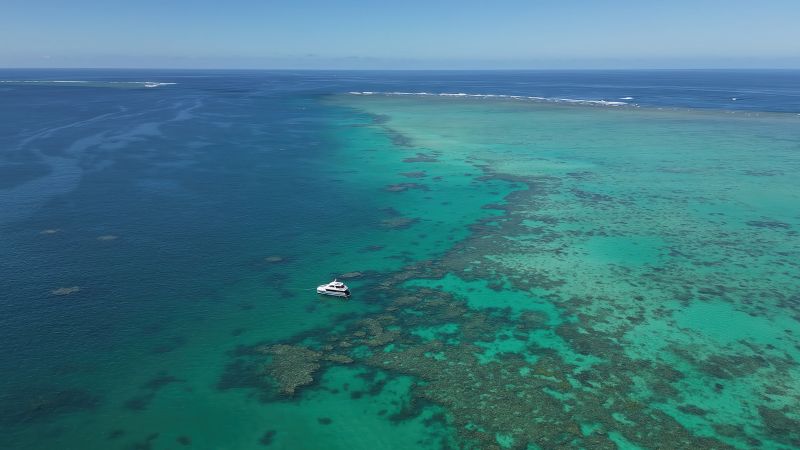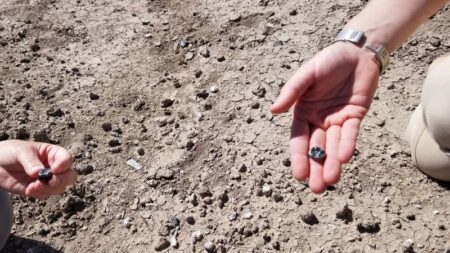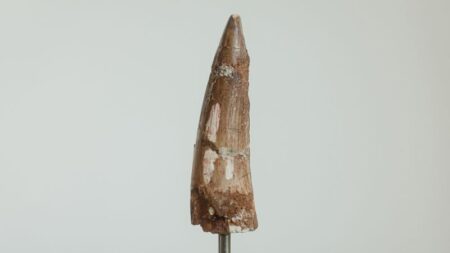The Great Barrier Reef, recognized as the largest living structure on Earth, exemplifies the intricate beauty of marine ecosystems. Home to countless species, it has increasingly suffered from severe environmental threats, notably mass coral bleaching. This phenomenon results when corals lose their colorful, symbiotic algae due to stress from rising water temperatures, leading to parts of the reef turning a stark white. While Australia’s Great Barrier Reef might be the most well-known, it is not alone in its plight; globally, over 80% of coral reefs experienced this alarming bleaching event, driven by unprecedented marine temperatures since 2023.
Coral reefs represent a mere 0.01% of the ocean floor yet are vital to a quarter of all marine organisms. They provide essential resources for human communities, including food and livelihoods, and serve as natural barriers against storms and erosion. Protecting these ecosystems is not only crucial for biodiversity but also for sustaining the human populations that rely on them. The urgency for action was highlighted recently at the UN Ocean Conference, where 11 nations committed to a pledge focused on preserving climate-resilient reefs, in addition to funding of $25 million for global coral initiatives.
Mitigating the threat to coral reefs requires a two-fold approach: reducing carbon emissions that exacerbate ocean warming and exploring innovative methods to foster coral resilience. At the University of Technology in Sydney, researchers from the Future Reefs initiative are on a quest to identify “super corals,” species that exhibit enhanced resilience against environmental changes, including higher temperatures and acidity. Led by marine biologist Dr. Emma Camp, the aim is to discover the mechanisms these corals utilize to survive and apply these insights for broader coral conservation efforts.
Initial discoveries pointed to hardier coral species thriving in mangrove lagoons, where conditions are naturally more extreme due to increased heat and acidity. So far, researchers have identified approximately 40 species displaying these enhanced survival traits in various locations around the world, with an ongoing focus on the Great Barrier Reef. Camp’s team aims to pinpoint coral species that not only endure higher temperatures but also retain key characteristics essential for their habitat, such as rapid growth rates and supportive structures for diverse marine life.
To achieve this, the Future Reefs team actively participates in field expeditions assessing coral species along the Great Barrier Reef. They employ sophisticated heat tolerance testing to gauge which corals stand the best chance of survival as temperatures rise, alongside carrying out DNA analyses for more comprehensive assessments. Once resilient species are identified, collaborative efforts through initiatives like the Coral Nurture Program facilitate the propagation of these corals in nurseries strategically placed across the reef for eventual outplanting into affected areas.
Since its inception in 2018, the Coral Nurture Program has successfully outplanted over 125,000 corals along the Great Barrier Reef, notably in locations like Cairns and the Whitsundays, achieving an impressive survival rate of 85%. Yet the scope of restoration is vast; the reef system consists of nearly 3,000 individual reefs spanning over 344,000 square kilometers. In light of the recent bleaching data indicating that 60% of the reefs could be under stress, the team remains hopeful that early signs of recovery are observable where outplanting efforts occur.
Across the globe, initiatives similar to Australia’s are emerging. For instance, the Australian Institute of Marine Science is employing selective breeding techniques to cultivate heat-tolerant corals, with evidence of genetic interventions showing promise, though results vary across different species. Meanwhile, research in the UK has indicated potential for selectively breeding corals that withstand marine heatwaves, although large-scale natural trials are yet to be initiated.
Despite prior restoration efforts, studies show coral restoration can regress within years if serious bleaching events recur. The Coral Nurture Program aims to address this by prioritizing the proliferation of heat-resilient corals, thereby equipping them to better withstand future stress. Equally challenging is the intricate and labor-intensive process of coral outplanting, which necessitates divers planting corals by hand.
To enhance scalability, Camp emphasizes community involvement, engaging local tourism operators to integrate coral restoration into snorkeling trips that benefit both education and ecological recovery. Collaborations with businesses such as Wavelength Reef Cruises have played a pivotal role in advancing coral nursery operations, monitoring coral health, and performing planting activities.
In addition to these direct outplanting efforts, the Future Reefs team is investigating alternative techniques to bolster coral resilience. Researchers are exploring the efficacy of administering vitamins or specialized diets to enhance coral health and robustness against stressors. Initial laboratory experiments have involved feeding corals diverse food sources and enriching their water with beneficial nutrients, focusing on developing a nutrient supplement to assist corals during stressful periods.
“This is akin to humans taking dietary supplements when feeling depleted; it could provide corals with essential boosts during bleaker times,” explains Camp, indicating potential for these solutions to be widely applicable across reefs globally. She emphasizes the importance of innovation and open-mindedness when addressing












